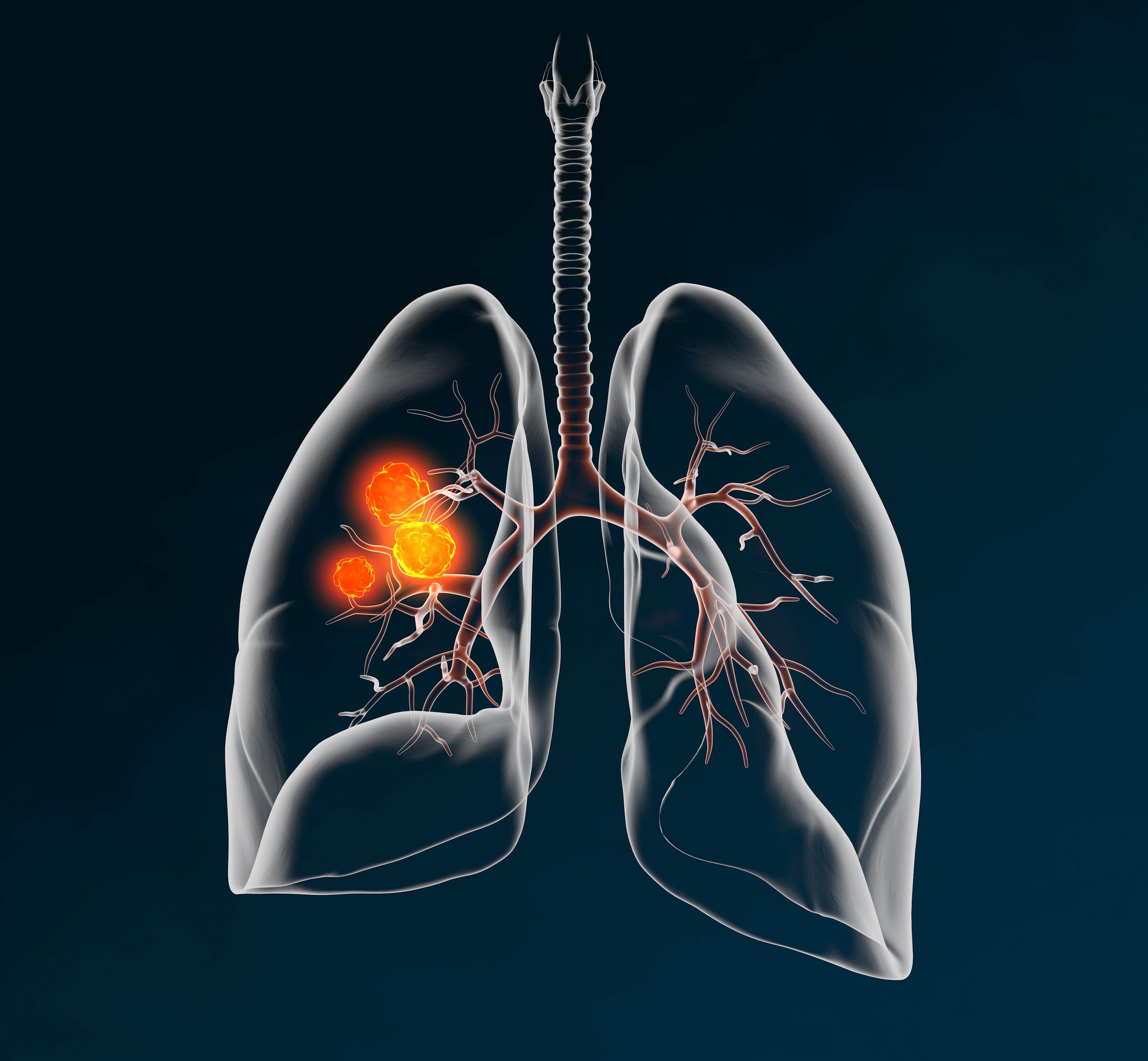New Rapid Lung Cancer Screening Using MALDI-MS
Lung cancer is responsible for 21% of cancer deaths, according to the National Cancer Institute (1). It is vital to create early screening methods with high classification accuracy to detect cancer early in patients. Recently, a team from the Chinese Academy of Sciences has created a new method using 2-hydrazinoquinoline (2-HQ) as a dual-mode reactive matrix for both metabolic fingerprint analysis and LC screening via matrix-assisted laser desorption ionization mass spectrometry (MALDI–MS). According to the study, which was published in Analytical Chemistry, metabolites in both positive and negative mode can be detected using this matrix, all while enabling simultaneous derivative analysis of aldehyde and ketone compounds (2).
Lung cancer, medically 3D illustration on dark background | Image Credit: © Axel Kock - stock.adobe.com

To test this method, hundreds of serum and urine samples were analyzed, parts of which were from lung cancer patients and others from healthy volunteers. Using the technique in tandem with machine learning algorithms, the samples were successfully distinguished with a high area under the curve value (0.996 for blind serum samples and 0.938 for urine). The MS signal enabled metabolic profiling while dysregulated metabolites of the LC group were analyzed.
The researchers concluded this method has potential for quickly and efficiently screening for lung cancer.
References
(1) National Cancer Institute. Cancer Stat Facts: Common Cancer Sites. U.S. Department of Health and Human Services 2023. https://seer.cancer.gov/statfacts/html/common.html (accessed 2023-08-18)
(2) Li, Z.; Sun, C.; Jia, K.; Wang, X.; Han, J.; Chen, J.; Wang, J.; Liu, H.; Nie, Z. Biofluid Metabolic Profiling for Lung Cancer Screening via Reactive Matrix-Assisted Laser Desorption Ionization Mass Spectrometry. Anal. Chem. 2023, 95 (32), 12062–12070. DOI: https://doi.org/10.1021/acs.analchem.3c02015
New Method Explored for the Detection of CECs in Crops Irrigated with Contaminated Water
April 30th 2025This new study presents a validated QuEChERS–LC-MS/MS method for detecting eight persistent, mobile, and toxic substances in escarole, tomatoes, and tomato leaves irrigated with contaminated water.

.png&w=3840&q=75)

.png&w=3840&q=75)



.png&w=3840&q=75)



.png&w=3840&q=75)


